eBay has long stood as a market leader in the eCommerce marketplaces, offering a platform where buyers and sellers can engage in transactions for a wide array of products. From vintage trinkets to the latest tech gadgets, eBay has been a one-stop-shop for many.
However, as the digital world evolves, a number of alternative platforms are emerging that challenge eBay’s long-held prominence. Some users are increasingly frustrated with eBay’s complex fee structure, the crowded and competitive nature of listings, or some are simply seeking platforms that offer a more niche or curated user experience.
If you’re among those contemplating a shift away from eBay or looking to diversify, our guide on eBay alternatives is what you need.
Also check out our guide to Amazon alternatives.
| Do you have a great business idea, but you don’t know how to get started selling online? Shopify is the answer. With Shopify, you can create an eCommerce website in minutes, without any design or coding experience. The platform is packed with features that help you find new customers, drive sales, and manage your day-to-day operations. So whether you’re just getting started or you’ve been in business for years, Shopify has everything you need to take your business to the next level. You can try Shopify free for 3 days. No credit card required. |

Start selling with Shopify
for $1/month for your first 3 months.
At a glance
| Marketplace | Operates In | Product Categories | Sales Commission |
|---|---|---|---|
| Amazon | Everywhere | All | $0.99 per item sold plus 8%-15% commission. |
| | US, UK, Canada etc. | All | Below $1,000 – $0.25 + 3.5% Over $1,000 – $0.25 + 3.5% + 1.5% of the amount over $1000 |
Bookoo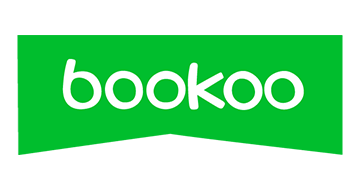 | US, UK, Italy, Germany, Belgium, Japan, Korea, Spain | All | Free |
Craigslist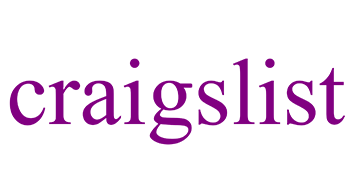 | Everywhere | Jobs, services, items for sale | Free |
 | Everywhere | All | 0%-5% |
| | US, UK, Australia | All | 2.9% |
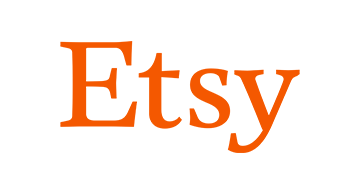 | Everywhere | Arts, crafts and collectibles | 6.5% |
eWorldTrade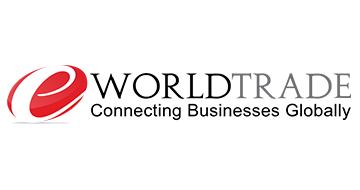 | Everywhere | All | Yearly fee of minimum $1499. |
| Facebook Marketplace | Everywhere | All | Free |
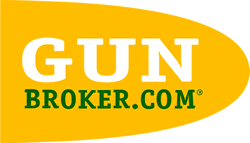 | US | Guns, hunting, military and taxidermy | 6% of the first $250, 4% thereafter |
Lightinthebox | Europe and US | Clothes, Home, Electronics | 15% commission |
Newegg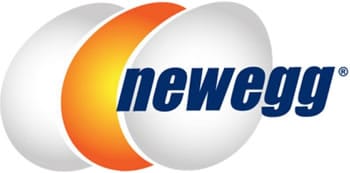 | All | Tech | Free, or $29.95 / month, or $99.95 / month, Plus 8 to 15% commission. |
Nextdoor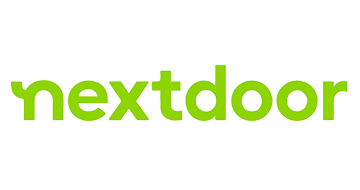 | US, UK, Netherlands, France, Germany, Italy, Spain, Australia, Denmark, Sweden and Canada. | All (locally) | Free |
|
 | UK | Gifts, handmade, home, jewelry etc. | 25% including payment + VAT |
| OfferUp | US, UK, Canada, India, Germany, France, Australia | All | Listing is without charge, but there’s a 12.9% fee on the final sale price, or a minimum of $1.99. |
| OpenSky | US | Clothes, Kitchen Electronics, etc. | A commission of 20% is levied on successful sales, while sales originating from OpenSky promotional marketing incur a 30% commission. |
| Poshmark | US, Canada, Australia and India. | Fashion, Home Decor, Beauty, etc. | Fees for successful sales are set at $2.95 for all transactions below $15, while a 20% commission applies to sales exceeding $15. |
Rakuten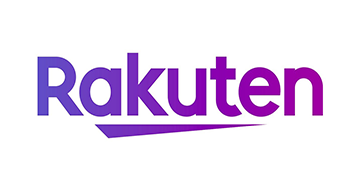 | All | All | A monthly charge of $39 for sellers, an item listing fee of $0.99, and a commission ranging from 8% to 20% on sales. |
|
| Everywhere | Musical instruments and equipment etc. | 5% |
| | US | Antiques and vintage | No commission but monthly fees apply |
| Sears Marketplace | US | 20 merchandise categories | A monthly fee of $39.99 is required to join Sears Marketplace, in addition to a commission ranging from 8% to 20% on sales. |
| Shopify | All | All | Free, or $5/ month, or $29 /month, or $79/ month, or $299 /month, or $2000 /month. |
Storenvy | US, UK, Canada, India, Germany, France, Australia | All | Listing is without charge, but there’s a 12.9% fee on the final sale price, or a minimum of $1.99. |
Varagesale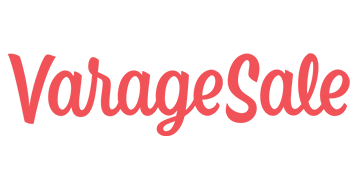 | US, Canada, Australia, Germany, Italy, Japan and UK | All | Free |
| Vestiaire | 74 countries | Clothes, vintage | There’s no charge for listings, but a 12% success fee is applied, along with a 3% processing fee. |
| Walmart | US, Canada, Africa, Central America, Chile, China, India, Mexico | All | Referral fee of between 8% and 20% for successful sales. |
Wish | Everywhere | All | 15% revenue share. |
eBay Alternative for Sellers
There are several marketplaces out there that have very similar characteristics to eBay. In this list, you will find some listing-driven marketplaces, where sellers own their listing, instead of being dumped onto one with all the other sellers offering that product. These marketplaces also give sellers the chance to make themselves unique, by offering some ability to brand their products
The last aspect is that these marketplaces have a community feel, harking back to the person-to-person vibe that eBay used to have. This means that they aren’t just full of big companies, and competition on the marketplace is fair.
Amazon

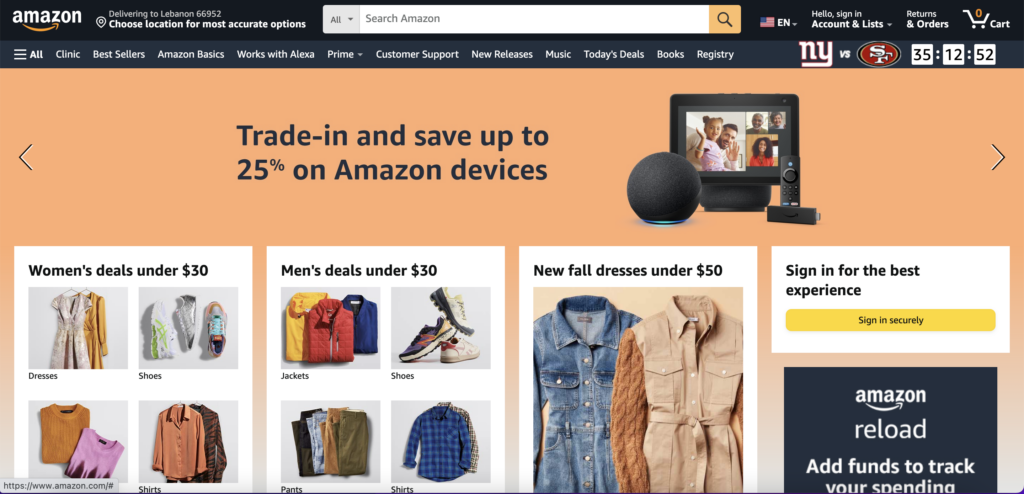
Pros and Cons
| Pros | Cons |
|---|---|
| Massive customer base for increased visibility. | High level of competition among sellers. |
| Built-in algorithm for personalized product recommendations to users. | Fees can add up, especially for small businesses. |
| Fulfilment by Amazon (FBA) for streamlined order processing. |
What Market is Amazon Best For?
Amazon is a versatile platform suitable for almost any seller dealing in any kind of product. However, it’s particularly advantageous for those who can keep their prices competitive without sacrificing too much on profit margins. Small sellers might find the competition stiff, and pricing could be challenging.
Costs to Sell on Amazon
Amazon offers free listings but charges a fee per successful sale. Specifically, it costs $0.99 per item sold, plus a commission ranging between 8% and 15% of the sale price.
Direct Comparison with eBay
- Pricing model: Amazon’s sales are fixed-price and instant, contrasting with eBay’s auction-centric model.
- Fees: Both platforms allow free listings but differ in the fees charged on successful sales. Amazon’s is $0.99 per item plus 8%-15% commission, whereas eBay’s is $0.30 per item plus a 12.9% commission.
- Customer perks: Amazon’s perks, such as 2-day shipping for Prime members and top-notch customer service, often lure in more customers. eBay doesn’t offer additional services to buyers and places the responsibility of customer service on individual sellers.
- Fulfillment: Amazon offers FBA, allowing even small sellers to leverage Amazon’s vast global logistics network for quick and smooth deliveries. eBay doesn’t offer a comparable service.
Bonanza

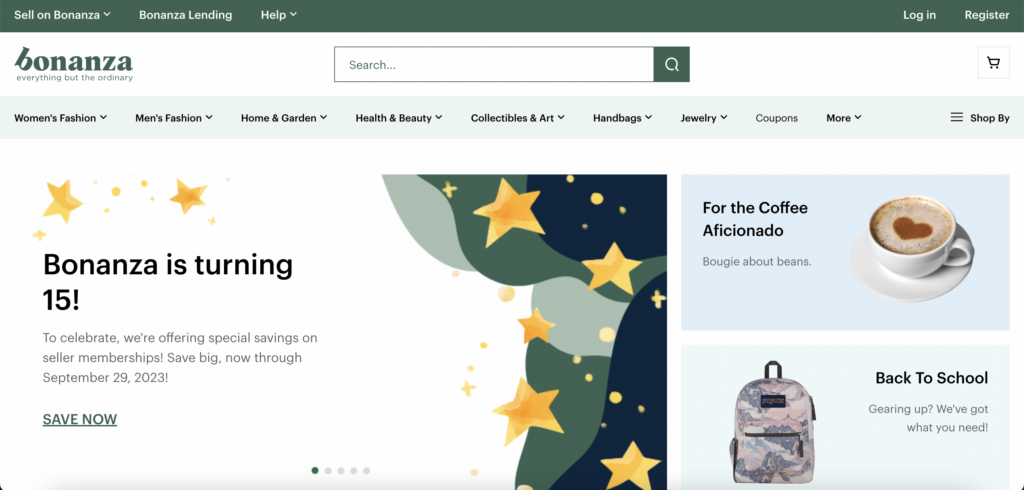
Pros and Cons
| Pros | Cons |
|---|---|
| Bonanza allows for seamless imports of existing eBay listings, making it hassle-free for sellers to set up shop on a new platform. | Additional charges for sellers. |
| Bonanza offers the unique feature of importing feedback from eBay, ensuring that your hard-earned reputation doesn’t go to waste when switching platforms. | |
| With the inclusion of a live chat feature, Bonanza facilitates direct communication between buyers and sellers, fostering trust and rapport. | |
| Bonanza doesn’t charge any fees for listing items, reducing the upfront costs for sellers. |
What Market is Bonanza Best For?
Bonanza is perfect for existing eBay sellers looking to expand their reach or diversify their online selling platforms. Given its person-to-person feel and direct communication features, it’s particularly suited for sellers who value building relationships with their customers.
Costs to Sell on Bonanza
Listing on Bonanza is free. However, for successful sales, there’s a fee of 3.5% for items up to $1,000. For sales exceeding $1,000, an additional 1.5% fee on the exceeding amount is applied.
Direct Comparison with eBay:
- Ease of transition: Bonanza scores points for facilitating easy transitions for eBay sellers by allowing them to import listings and feedback.
- Interaction: Unlike the more transactional nature of eBay, Bonanza emphasizes personal interactions through features like live chat.
- Fee structure: While both platforms have their fee structures, Bonanza offers no listing fees but has a tiered system for sales fees.
- Reputation portability: A unique feature of Bonanza is the ability to import eBay feedback, allowing sellers to leverage their existing reputation.
Bookoo
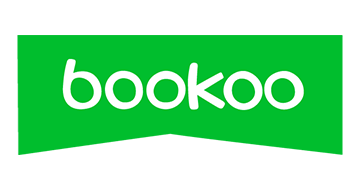
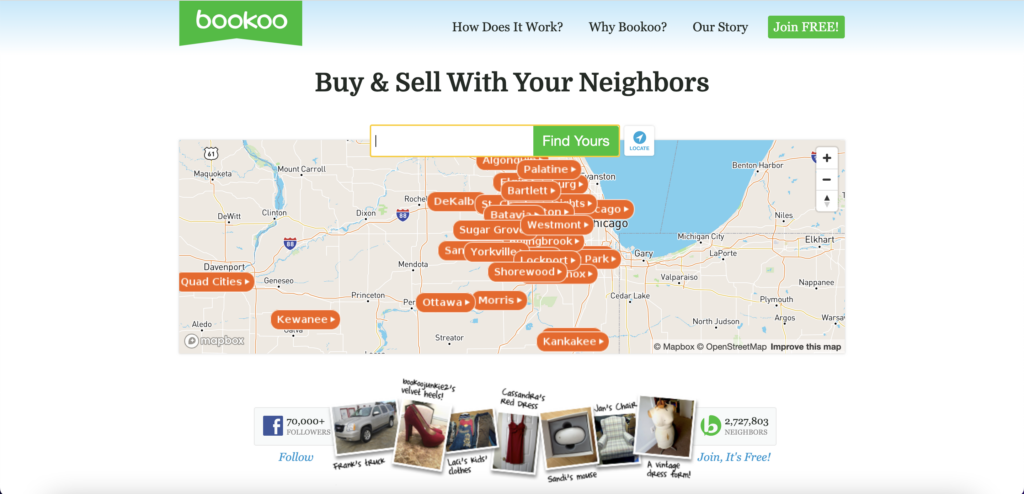
Pros and Cons
| Pros | Cons |
|---|---|
| Free listings make it accessible for anyone looking to sell items. | Lack of a built-in payment system means that buyers and sellers have to handle transactions independently, potentially adding risk. |
| No fees or commissions on sales offer an incentive for sellers. | No intervention in disputes, returns, or exchanges can make transactions less secure. |
| Emphasis on local selling provides a niche market for local communities. | Much lower traffic compared to platforms like eBay, limiting exposure and potential sales. |
What Market is Bookoo Best For?
Bookoo is aimed at sellers and buyers who prefer a local, community-based trading experience. It’s most effective for individual sellers who are content with fewer features in exchange for no fees.
Costs to Sell on Bookoo
Bookoo is free to use, both for listing and for completing transactions. Unlike eBay, it does not charge a success fee, making it an entirely free platform.
Direct Comparison with eBay
- Business model: Bookoo is focused on local, peer-to-peer transactions, while eBay operates globally and caters to a wide range of sellers.
- Fees: Listings are free on both platforms, but eBay charges a success fee, which Bookoo does not.
- Functionality: eBay offers a more comprehensive suite of tools and features, including a built-in payment system, which Bookoo lacks.
- Traffic: eBay is a major player with millions of visits, while Bookoo is a smaller platform with around 700k monthly visits.
Craigslist

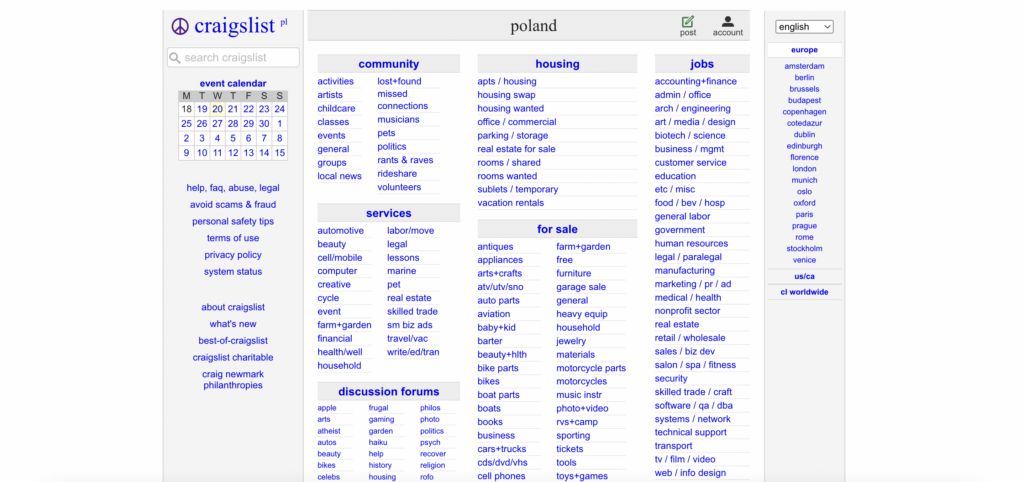
Pros and Cons
| Pros | Cons |
|---|---|
| No listing or selling fees for the vast majority of items. | No dispute resolution service; you are on your own in case of issues. |
| Ability to sell a wide range of items, from furniture to personal services. | Limited to local transactions, thereby restricting your market reach. |
| Transactions are local and often in cash, allowing you to avoid shipping hassles and fees. | Simplistic interface with minimal features for aiding the selling process. |
| “Free” section offers opportunities to repurpose or flip items. |
What Market is Craigslist Best For?
Craigslist is ideal for sellers who prefer local, hands-on transactions. It’s especially good for those looking to sell items that are cumbersome or expensive to ship, such as furniture. The platform is also well-suited for individuals who enjoy the social aspect of meeting buyers in person and prefer managing transactions personally. However, if you’re concerned about potential scams or disputes, Craigslist may not be the best fit.
Costs to Sell on Craigslist
Listings are free to set up on Craigslist for the majority of the items.
Direct Comparison with eBay
- Fees: eBay charges for listings and sales, while Craigslist is mostly free, except for a few categories like job listings and vehicles.
- Dispute resolution: eBay offers a structured dispute resolution process, whereas Craigslist leaves you to manage disputes independently.
- Market reach: Craigslist is designed for local transactions, whereas eBay has a broader reach.
Visit Craigslist seller portal.
eBid

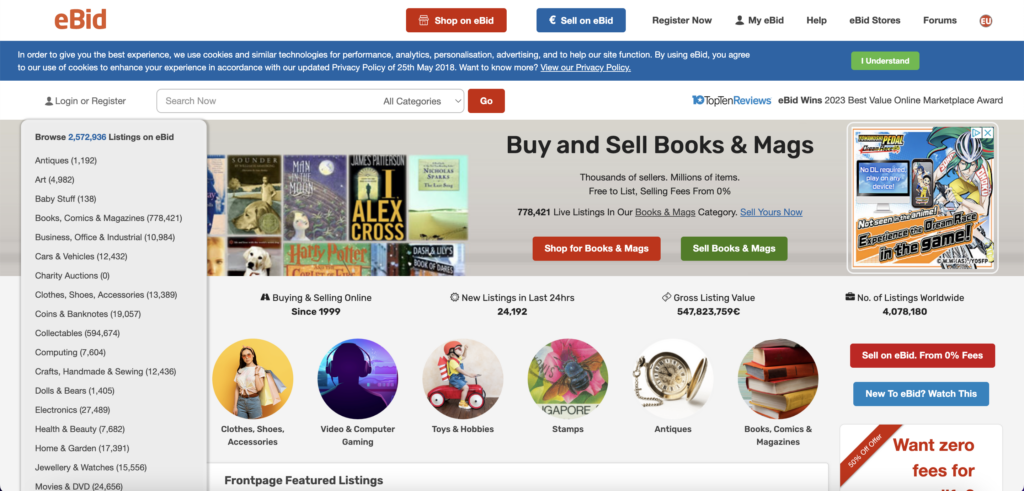
Pros and Cons
| Pros | Cons |
|---|---|
| eBid caters to various sellers by offering both fixed-price listings and auction formats. | To enjoy the maximum benefits and zero commission fees, sellers need to make a substantial one-time payment for the Platinum Lifetime account. |
| The Buddy Points system incentivizes both buyers for making purchases and sellers for garnering positive feedback, fostering a community-centric environment. | |
| With three different selling account types, eBid provides flexibility to cater to both casual and dedicated sellers. | |
| For Platinum Lifetime account holders, eBid supports importing listings from major platforms like Amazon, eBay, and Etsy, simplifying the transition process. |
What Market is eBid Best For?
eBid is ideal for sellers ranging from hobbyists to professionals. The variety in account types caters to sporadic sellers as well as those wanting to manage multiple dedicated stores. Its import feature is a boon for sellers already operating on platforms like eBay, Amazon, or Etsy.
Costs to Sell on eBid
eBid offers a tiered pricing structure:
- Silver Account: Free listing with a 5% fee on successful sales.
- Gold Plan: Upgrade Fee : 7 Day $1.99 | 30 Day $9.99 | 90 Day $16.99 | 365 Day $64.99 | Lifetime (special offer running) $139.98. Enhanced perks and listings with a 2% fee on sales.
- Platinum Lifetime: A one-time payment of $139.98 (or $69.98 if upgraded within 24 hours of registration) grants sellers zero future commissions and additional advanced features.
Direct Comparison with eBay:
- Listing formats: Both platforms provide auction-style and fixed-price listings, though eBid adds a community touch with its Buddy Points system.
- Fee structures: eBid’s tiered structure can be more cost-effective in the long run, especially with the Platinum Lifetime account compared to eBay’s varying fees.
- Import capabilities: eBid’s feature of importing listings from major platforms stands out, especially beneficial for multi-platform sellers.
Community feel: eBid emphasizes community-building, rewarding both buyers and sellers, a feature that distinguishes it from the more commercial-centric eBay.
eCRATER

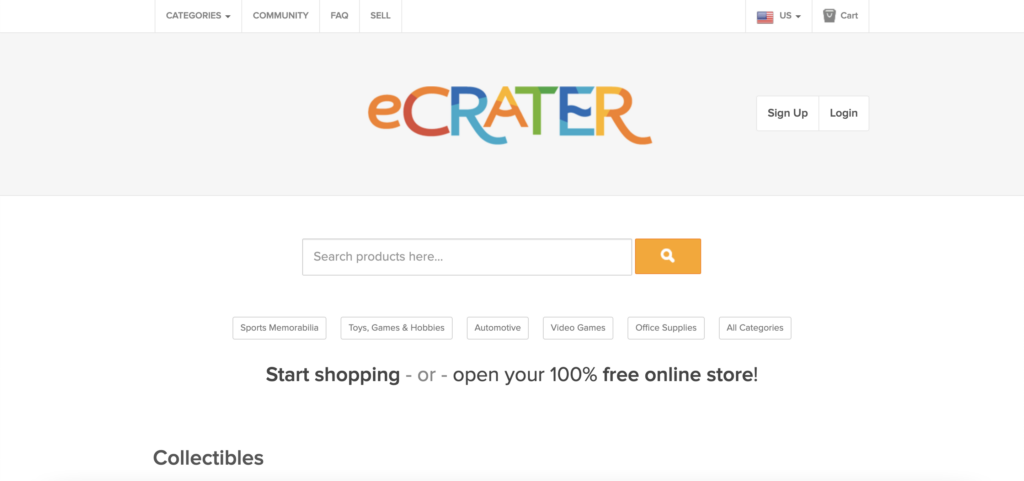
Pros and Cons
| Pros | Cons |
|---|---|
| eCRATER emphasizes individuality, allowing sellers to brand their stores with customizable templates, logos, and featured products. | For US-based listings, sellers must be prepared to ship products nationwide, which may pose a challenge for those with limited distribution capabilities. |
| With a transparent 2.9% fee upon sale and no upfront listing costs, eCRATER offers a simplified fee model. | |
| Sellers can create a recognizable web presence with tailored URLs that can include their business name, enhancing brand consistency. | |
| The platform is user-friendly and can be a smooth transition for those already familiar with eBay. |
What Market is eCRATER Best For?
eCRATER is tailored for sellers who value branding and customization. Whether a novice or a seasoned eBay veteran, this platform suits those who want to establish a unique online presence with their store while enjoying a simplified fee model.
Costs to Sell on eCRATER
Creating a store on eCRATER is entirely free. Sellers are only charged a 2.9% fee upon the successful sale of an item.
Direct Comparison with eBay:
- Store customization: eCRATER stands out with its focus on allowing sellers to shape their store’s identity, offering templates and customizable URLs, whereas eBay follows a more standardized listing approach.
- Fee structure: eCRATER’s straightforward 2.9% fee contrasts with eBay’s varied fees, which can include listing charges and differing final value fees.
- Branding: With its emphasis on individuality, eCRATER offers sellers more opportunities to brand and customize their stores, setting it apart from the more generic eBay storefronts.
- Operational reach: While both platforms cater to multiple regions, eCRATER sellers in the US have a mandatory nationwide shipping requirement.
Etsy
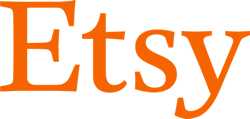
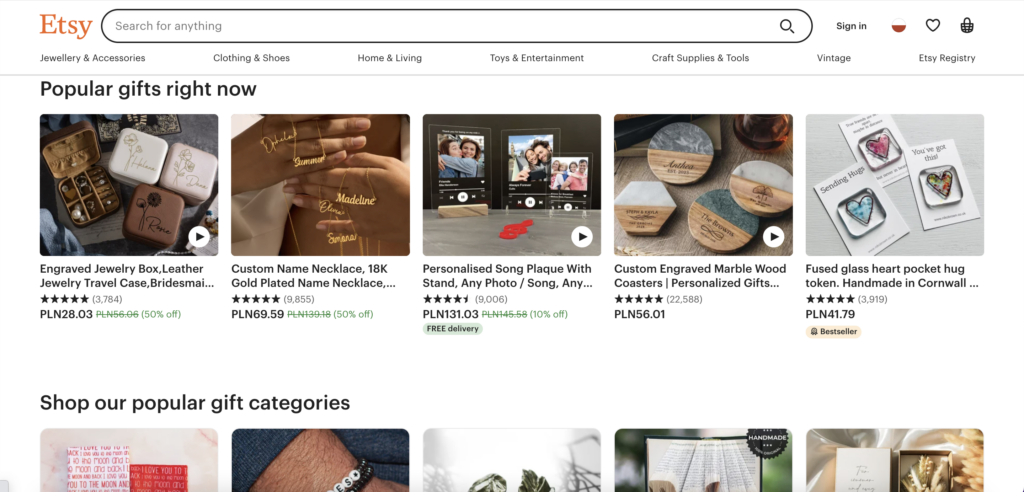
Pros and Cons
| Pros | Cons |
|---|---|
| Etsy specializes in crafts, handmade items, vintage clothing, and collectibles, ensuring a targeted and engaged audience. | Sellers incur a $0.20 listing fee, another $0.20 for renewing an expired listing, and a 6% commission on successful sales, which can accumulate for active sellers. |
| With features like the “meet the owner” section, Etsy fosters a sense of community, allowing buyers to connect personally with sellers. | |
| Etsy’s product listing process mirrors that of eBay, making it easy for sellers familiar with the latter to transition. | |
| Listings remain active for up to four months, giving products extended visibility without immediate renewal requirements. |
What Market is Etsy Best For?
Etsy is ideal for artisans, crafters, and vintage enthusiasts looking for a dedicated platform to showcase their unique products. Its niche focus attracts buyers explicitly interested in handmade and vintage items, ensuring a more tailored audience for sellers.
Costs to Sell on Etsy
Listing an item on Etsy comes with a fee of $0.20, and this fee applies again for renewing a listing after four months. Upon a successful sale, sellers are charged a commission of 6% of the final sales price.
Direct Comparison with eBay:
- Product focus: While eBay is a generalist marketplace catering to a broad range of items, Etsy zeroes in on handmade, vintage, and craft-related products.
- Community aspect: Etsy offers a more personalized experience with features like the “meet the owner” section, fostering a stronger community bond than eBay.
- Fee structure: Etsy’s fees revolve around listing and sale commissions, while eBay has a more complex structure that includes insertion fees and varied final value fees.
- Listing duration: Etsy listings have a longer default duration of four months compared to eBay’s standard 30-day listing period.
eWorldTrade

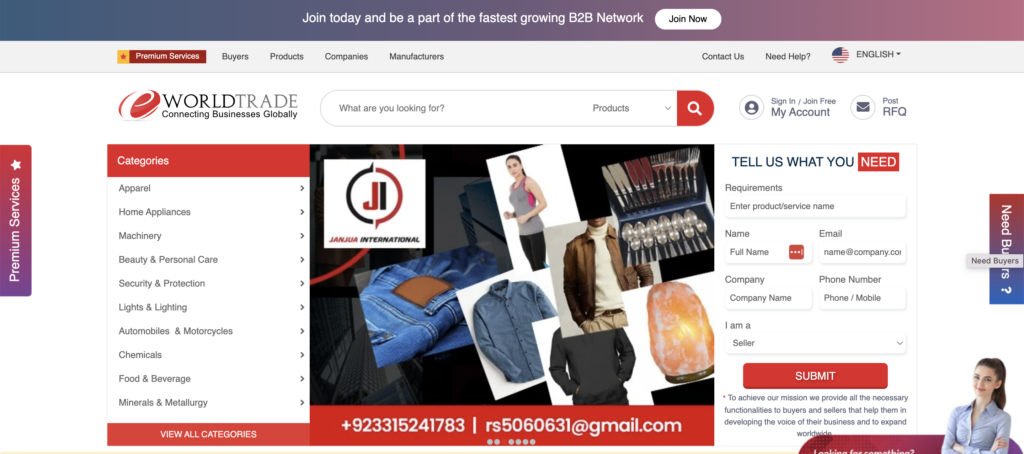
Pros and Cons
| Pros | Cons |
|---|---|
| A specialized B2B platform that connects merchants to suppliers, fulfilling a unique need in the market. | The platform has received mixed reviews, particularly regarding customer service and inconsistent messaging. |
| A growing database of manufacturers and suppliers, expanding the range of options for buyers. | High yearly fees for suppliers, ranging from $1499 to $7999, without any guarantee of sales. |
| Some users find the platform easy to use and valuable for finding quality suppliers. | The fee structure for buyers is unclear, making it hard to gauge the cost-effectiveness of using the platform. |
Facebook Marketplace
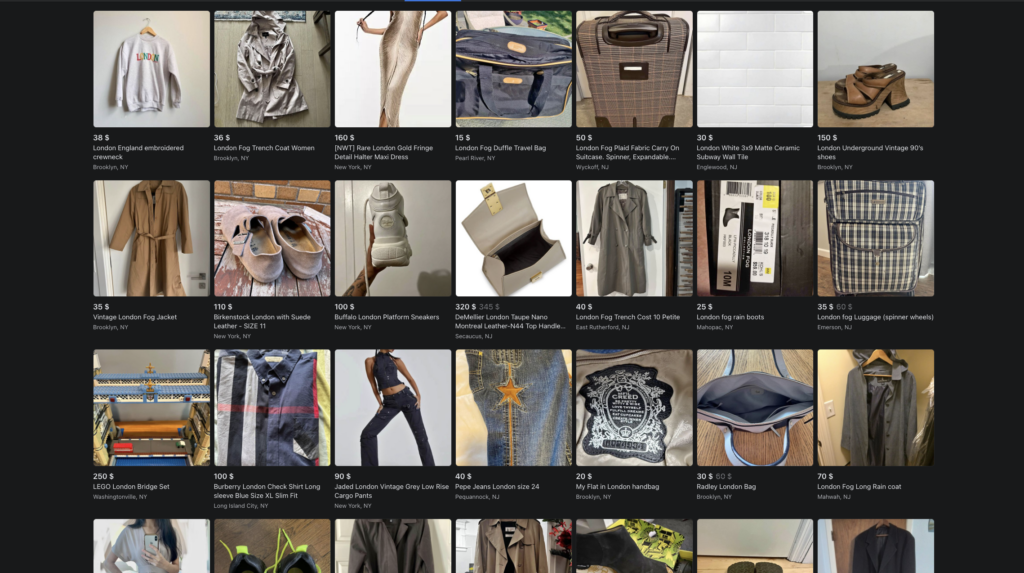
Pros and Cons
| Pros | Cons |
|---|---|
| Free to list and sell items, making it budget-friendly. | Limited to a localized customer base as opposed to eBay’s global reach. |
| Allows for localized selling to target specific communities or regions. | Negotiations often occur through Messenger, which can be time-consuming for large volumes. |
| Offers features like Facebook Checkout for U.S. sellers, streamlining the sales process. |
What Market is Facebook Marketplace Best For?
Facebook Marketplace is particularly well-suited for those selling secondhand or local items. It allows you to tap into Facebook’s high traffic and broad user base. In the U.S., sellers can also set up a branded Facebook Shop to expand their reach and complement their primary online store.
Costs to Sell on Facebook Marketplace
Selling on Facebook Marketplace is generally free, this sets it apart from platforms like eBay that charge both listing and comission fees.
Direct Comparison with eBay
- Pricing model: Facebook Marketplace is free to use, whereas eBay charges for listings and successful sales.
- Customer base: Facebook is mainly for localized selling, while eBay has a broad, international customer base.
- Niche markets: Certain customer bases, like antique collectors, are more prevalent on eBay than on Facebook Marketplace.
- Branding: Building a brand is more challenging on Facebook Marketplace, unless you’re in the U.S., where you can set up a Facebook Shop.
- Payment and negotiations: Outside the U.S., payment discussions usually happen via Messenger, making it less automated than eBay’s system.
Visit Facebook Marketplace seller portal.
GunBroker.com

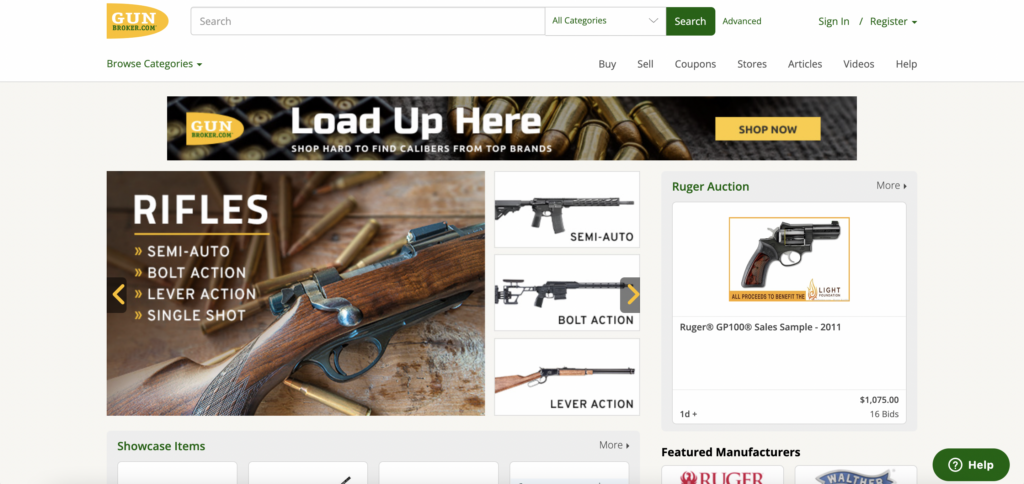
Pros and Cons
| Pros | Cons |
|---|---|
| GunBroker.com specifically caters to firearms, hunting equipment, and military collectibles, attracting a distinct audience. | Post-sale arrangements such as payment and delivery have to be made directly between the buyer and seller, which may be tedious for some. |
| Sellers have significant control, including specifying auction lengths, accepted payment methods, and return policies. | Only individuals who are legally permitted to own firearms and related items can sell on GunBroker.com. |
| Both auction and fixed-price listings are available, offering flexibility to sellers. | The final value fees are calculated in a tiered manner, which can be a bit complex for sellers to compute for higher-priced items. |
| The platform encourages a lot of direct interaction between buyers and sellers, fostering trust and clarity. |
What Market is GunBroker.com Best For?
GunBroker.com is tailor-made for sellers and collectors of firearms, hunting equipment, and military collectibles within the US. Those who appreciate direct buyer-seller communication and have legal authorization to trade in such items will find it particularly useful.
Costs to Sell on GunBroker.com:
Selling on GunBroker.com is free in terms of listing. However, a final value fee is applicable: 6% for items priced up to $325. For items over $325, it’s 6% for the initial $325 and then 4% of the amount beyond that. For instance, on a $1000 sale, the fee would be $46.50.
Direct Comparison with eBay:
- Niche focus: Unlike eBay’s broad marketplace, GunBroker.com is centered around firearms and related categories.
- Seller control: GunBroker.com offers more autonomy to sellers regarding auction specifics and return policies than eBay.
- Post-sale coordination: While eBay has a more streamlined payment and shipping process, on GunBroker.com, these details are worked out directly between the buyer and seller.
- Fee structure: While eBay charges both listing and final value fees, GunBroker.com only charges final value fees in a tiered structure.
Don’t worry, they offer a fee calculator!
Visit GunBroker.com’s seller portal
Lightinthebox

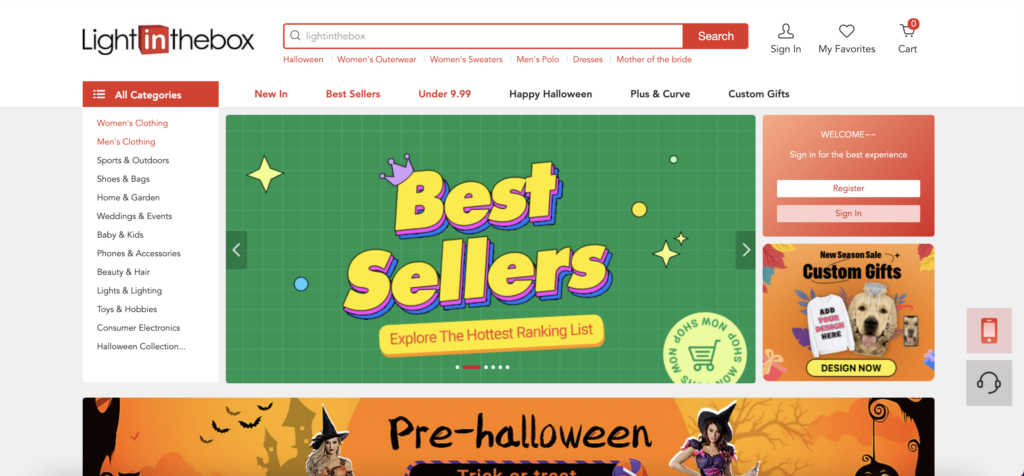
Pros and Cons
| Pros | Cons |
|---|---|
| Offers international reach, supporting 26 languages and 48 currencies. | Higher commission fees than eBay, at 15% of the sale price. |
| Provides customer service and returns handling, alleviating those responsibilities from the seller. | Sellers must cover shipping costs to the nearest Lightinthebox warehouse. |
| Solid user base with 37.78 million monthly users, promising reasonable traffic to listings. | May charge warehousing fees depending on how long your products remain in their facilities. |
| Requires more paperwork, including a business license and tax registration certificate, making it less accessible for casual sellers. |
What Market is Lightinthebox Best For?
Lightinthebox is not geared towards individuals looking for a side hustle but is better suited for dedicated commerce professionals. Given the need for more complex logistics and paperwork, this platform is best for those serious about expanding into Chinese and other Asian markets.
Costs to Sell on Lightinthebox
Lightinthebox charges a 15% commission fee on each sale. Sellers are also responsible for the cost of shipping their items to the nearest Lightinthebox warehouse. Depending on the time your products spend in their facilities, additional warehousing fees may also apply.
Direct Comparison with eBay
- Seller sign-up: Lightinthebox requires more documentation, like a business license and tax registration, making it less accessible than eBay.
- Fee structure: Lightinthebox has a higher commission fee of 15%, compared to eBay’s fee structure of 12.9% plus $0.30.
- Shipping and logistics: Unlike eBay, where shipping is the seller’s responsibility, Lightinthebox handles shipping and customer service after the products reach their warehouse.
- Audience: Lightinthebox is strong in Asian markets and caters to an international customer base, offering more languages and currencies than eBay.
- Responsibilities: eBay leaves customer service and returns to the individual sellers, while Lightinthebox handles these aspects for you.
Visit Lightinthebox seller portal.
Newegg

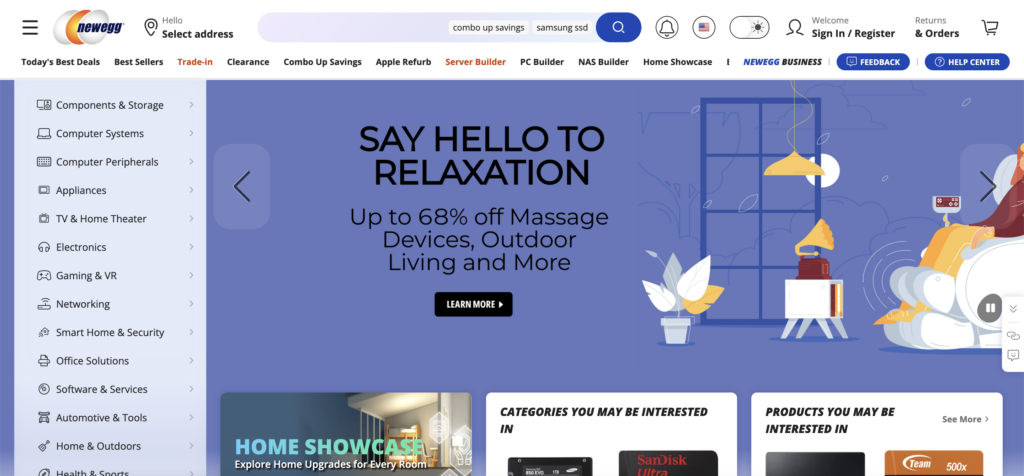
Pros and Cons
| Pros | Cons |
|---|---|
| Newegg is branded as the go-to marketplace for everything tech, which means sellers can tap into a vast audience specifically interested in tech products. | Newegg exclusively focuses on tech products, limiting the variety of goods sellers can offer when compared to more general platforms like eBay. |
| With the “Shipped By Newegg (SBN)” service, Newegg offers a logistics solution similar to Amazon’s FBA, a feature that eBay doesn’t have. | While Newegg offers a free membership, the premium memberships come at a cost, with fees ranging from $29.95 to $99.95 per month. |
| Newegg provides dedicated account managers to help sellers set up their businesses and navigate the platform, ensuring a smoother selling experience. | Newegg charges a sales commission between 8% and 15%, which can be relatively high depending on the product’s selling price. |
| Newegg’s primary audience comprises men aged 18 to 35, allowing sellers to tailor their marketing strategies to this specific group. |
What Market is Newegg Best For?
Newegg is ideally suited for sellers specializing in tech products, particularly those targeting the US and Canada markets. Given the platform’s demographics, it’s an excellent fit for sellers aiming at the male audience aged 18 to 35.
Costs to Sell on Newegg
Sellers on Newegg can choose from different membership tiers. While there’s a free option, the platform also offers plans at $29.95/month and $99.95/month. Additionally, sellers will incur a commission of 8% to 15% on their sales.
Direct Comparison with eBay:
- Business model: Unlike eBay’s more extensive product catalog, Newegg strictly focuses on tech-related items.
- Fulfillment: Newegg offers its own fulfillment service, SBN, giving it an edge over eBay, which lacks such an option.
- Support: Newegg offers direct account manager support, enhancing the overall selling experience, while eBay tends to rely more on automated and community-driven support.
- Audience focus: Newegg has a more niche audience tailored to tech enthusiasts, whereas eBay appeals to a broader demographic.
Nextdoor

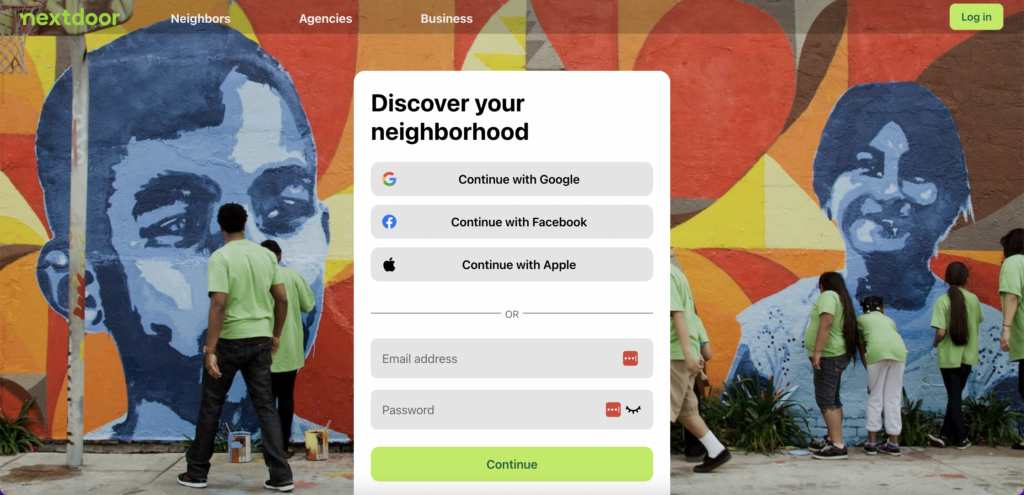
Pros and Cons
| Pros | Cons |
|---|---|
| Free to join and list items or services. | Limited to your immediate neighborhood, reducing the size of your potential market. |
| High level of trust within the community due to local focus. | Not designed as a commercial selling platform; more suitable for personal, occasional sales. |
| Versatile platform that goes beyond just buying and selling — also offers local updates, missing pet notices, and recommendations. | |
| Listings last for 30 days and can be renewed. |
What Market is Nextdoor Best For?
Nextdoor is particularly beneficial for individuals with second-hand or unwanted items from their personal collection that they’d like to sell locally. It’s also great for those interested in building stronger relationships within their immediate community. Due to its limited reach and non-commercial focus, Nextdoor is less suited for serious online retailers aiming to make substantial profits.
Costs to Sell on Nextdoor
It’s free to set up a listing on Nextdoor.
Direct Comparison with eBay
- Fees: Joining and listing on Nextdoor is free, whereas eBay has listing and comission fees.
- Audience: Nextdoor restricts your audience to your direct neighborhood, whereas eBay allows for an international market.
- Trust factor: Being a local community platform, Nextdoor generally has a higher level of trust among users compared to eBay.
- Commercial focus: eBay is designed for commerce, while Nextdoor serves more as a community bulletin board with selling as a secondary feature.
Notonthehighstreet

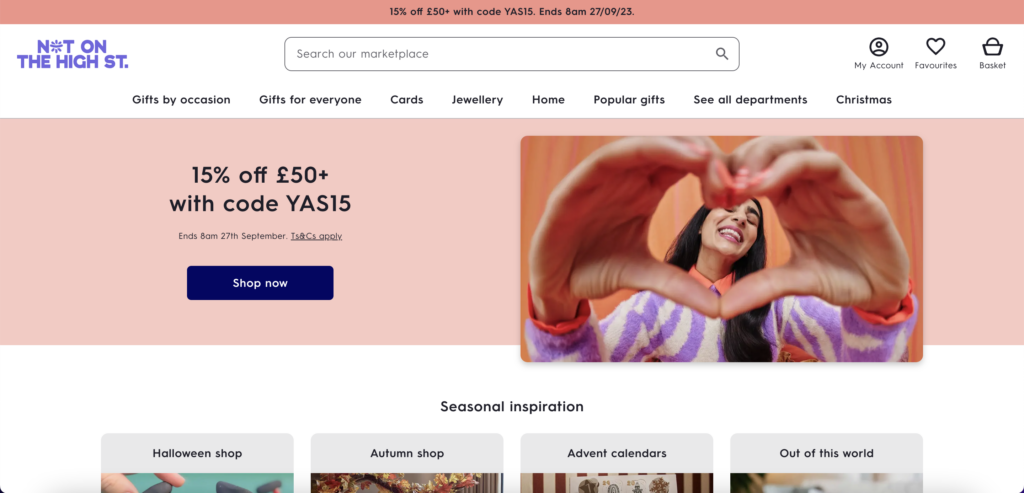
Pros and Cons
| Pros | Cons |
|---|---|
| Notonthehighstreet is dedicated to unique, personalized, and handmade products, attracting a specific audience looking for quality and originality. | With a joining fee of £199 and a 25% commission on sales, Notonthehighstreet’s fee structure is on the steeper side. |
| The platform enables sellers to craft their stories, describe their product-making process, and add images to their profiles, thus enhancing their branding. | Currently, the platform only caters to UK-based businesses, though they have plans to expand. |
| Compared to other handmade marketplaces, Notonthehighstreet boasts a clean and professional interface, appealing to both sellers and buyers. | |
| The rigorous application process ensures that only high-quality products are listed, establishing trust with potential buyers. |
What Market is Notonthehighstreet Best For?
Notonthehighstreet is ideal for artisans and crafters who offer unique and premium-quality products. It’s especially suitable for those who value the opportunity to present their brand story and are targeting a UK audience seeking bespoke items.
Costs to Sell on Notonthehighstreet
There’s an initial joining fee of £199. Once on board, sellers are charged a commission of 25% on every sale, in addition to VAT.
Direct Comparison with eBay:
- Niche focus: Notonthehighstreet focuses on unique, handmade, and personalized items, whereas eBay offers a broader range of product categories.
- Branding: Notonthehighstreet provides more opportunities for sellers to establish their brand presence compared to eBay.
- Fee structure: Notonthehighstreet’s joining fee and commission are notably higher than eBay’s typical listing and final value fees.
Seller selection: While eBay is open for almost anyone to start selling, Notonthehighstreet has a stringent application process ensuring quality control.
Visit Notonthehighstreet’s seller portal
OfferUp
![]()
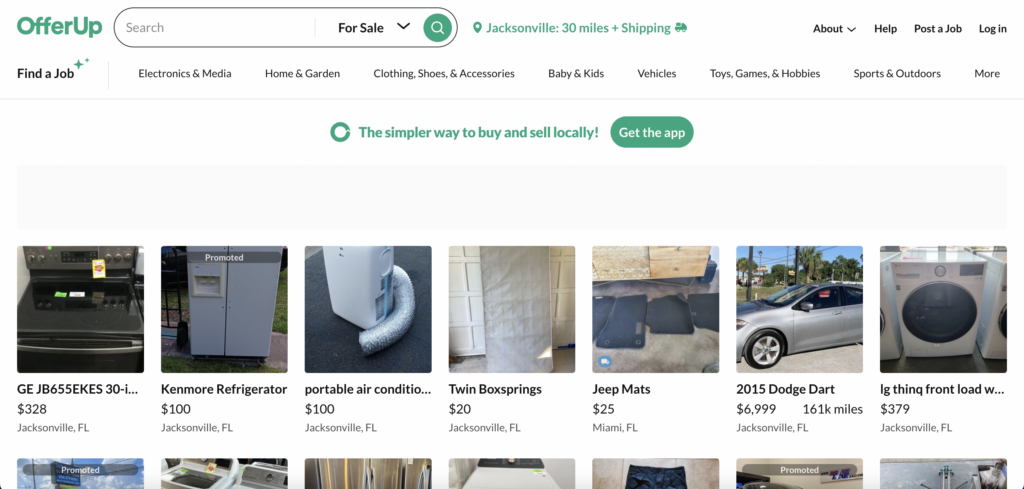
Pros and Cons
| Pros | Cons |
|---|---|
| User-friendly mobile app enhances the buying and selling experience. | Payouts can take significantly longer than they do on eBay. |
| Free listings and similar fee structures to eBay make it accessible for casual sellers. | Mainly operates within the U.S., making it less suitable for international sellers. |
| User ratings instill trust and credibility between buyers and sellers. | Limited to peer-to-peer transactions; not ideal for larger businesses or wholesalers. |
| A focus on local selling can be advantageous for those who prefer in-person transactions. |
What Market is OfferUp Best For?
OfferUp is primarily targeted at individual sellers who want to offload second-hand, preloved, or unwanted items in a local setting. The platform is perfect for users who wish to engage in peer-to-peer sales within their local community.
Costs to Sell on OfferUp
Listings on OfferUp are free, and the success fees are 12.9% of the sales price or a minimum of $1.99. Promoting listings starts at $1.99, and a Premium account with additional features costs $19.99 per month.
Direct Comparison with eBay
- Business model: OfferUp is designed for local, peer-to-peer selling, whereas eBay operates on a global scale.
- Fees: Both platforms have similar fee structures. OfferUp charges 12.9% or $1.99, whereas eBay charges 12.9% plus $0.30.
- Payout timing: OfferUp payouts can take between 10-14 days, whereas eBay usually pays out within 1-3 business days.
- Premium plans: OfferUp’s Premium plan costs $19.99 per month, while eBay’s store options start at $21.99 per month.
- Promotion: OfferUp allows for listing promotions starting at $1.99, while eBay offers custom promotional amounts ranging from 2-100% of the sale price.
OpenSky
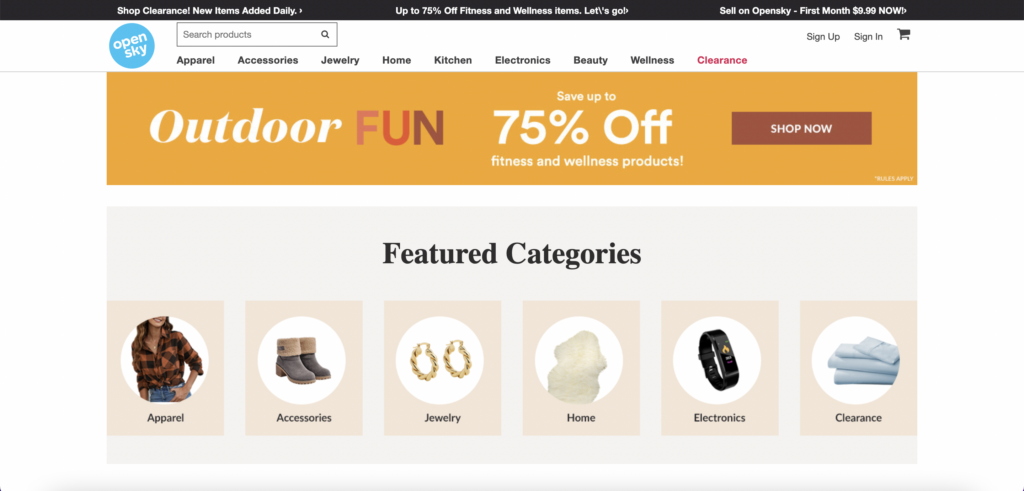
Pros and Cons
| Pros | Cons |
|---|---|
| Owned by the Alibaba network, providing a certain level of credibility and reach. | Mixed customer reviews highlighting inconsistent product quality, shipping times, and customer service. |
| No setup or listing fees, making it easy for new sellers to start without financial burden. | High commission rates: 20% on regular sales and 30% on sales from OpenSky promotions. |
| Offers a wide range of products with daily additions to its clearance section, attracting a variety of shoppers. | Customer service and fulfillment are left to individual merchants, leading to varied and sometimes subpar experiences. |
What Market is OpenSky Best For?
OpenSky is most beneficial for sellers who are looking to diversify their audience by tapping into a smaller, less competitive marketplace. It may also appeal to vendors who are interested in being part of a fast-growing eCommerce platform. However, smaller sellers or those without a robust customer service setup might find it challenging to succeed on OpenSky due to its high commission rates and the need for individual customer service and fulfillment.
Costs to Sell on OpenSky
OpenSky does not charge setup or listing fees, which makes it accessible for new vendors. However, the platform charges a 20% commission on successful sales and a 30% commission on sales resulting from OpenSky’s promotional marketing.
Direct Comparison with eBay
- Ease of setup: Both OpenSky and eBay make it easy to become a merchant with no setup or listing fees.
- Commission rates: OpenSky charges a considerably higher commission of 20-30% compared to eBay’s 12.9% + $0.30.
- Customer base: eBay boasts a more extensive customer base with 147 million shoppers compared to OpenSky’s 20 million.
- Customer experience: OpenSky’s hands-off approach to customer service and fulfillment means the quality of service varies greatly, whereas eBay offers a more standardized customer experience.
Poshmark
![]()
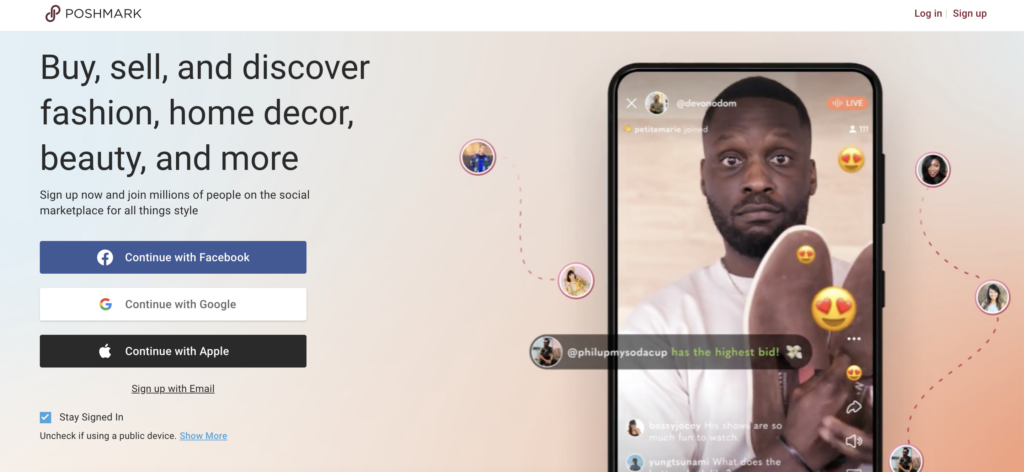
Pros and Cons
| Pros | Cons |
|---|---|
| Robust social features like following, liking, sharing, and commenting make for an engaging selling and buying experience. | Higher success fees than eBay, with a flat $2.95 for sales under $15 and 20% commission for sales above $15. |
| No upfront listing fees, offering a risk-free start for sellers. | Funds are only released to sellers after the buyer confirms delivery, which could lead to cash flow delays. |
| Strong focus on sustainability and circular economy through tools like Reposh. | Limited to specific markets (Canada, Australia, India, and the US), constraining global reach. |
| Automatic shipping label generation simplifies the post-sale process. |
What Market is Poshmark Best For?
Poshmark is ideal for fashion enthusiasts looking for a side hustle or anyone with a wardrobe full of branded and quality items they want to clear out. Its social features make it particularly appealing for sellers who enjoy interacting with customers and who are interested in sustainability. Poshmark is a good fit for those expecting to make between $300 and $1000 per month.
Costs to Sell on Poshmark
While listing on Poshmark is free, the platform takes a cut of your sale as a success fee. For all sales under $15, a flat fee of $2.95 is charged. For sales over $15, a 20% commission is levied.
Direct Comparison with eBay
- Seller sign-up: Both platforms offer easy sign-up, but Poshmark caters to a niche market focused on fashion and lifestyle items.
- Fee structure: Poshmark’s success fees are higher, with a flat $2.95 for sales under $15 and a 20% commission for sales above $15. eBay charges a fee of $0.30 plus 12.9% (or lower) of the sale price.
- Listing type: Both platforms support fixed price listings. Poshmark does not offer auctions, unlike eBay.
- Social features: Poshmark offers social interactions such as following, liking, sharing, and commenting, which eBay lacks.
- Shipping: Poshmark sends sellers a pre-paid, pre-addressed shipping label once an item sells, making shipping easier compared to eBay, where sellers usually have to manage this aspect themselves.
- Payment: Poshmark releases funds to sellers only after the buyer has marked the item as delivered, whereas eBay allows for quicker fund access but holds new sellers’ funds for a certain period.
Visit the Poshmark seller portal.
Rakuten

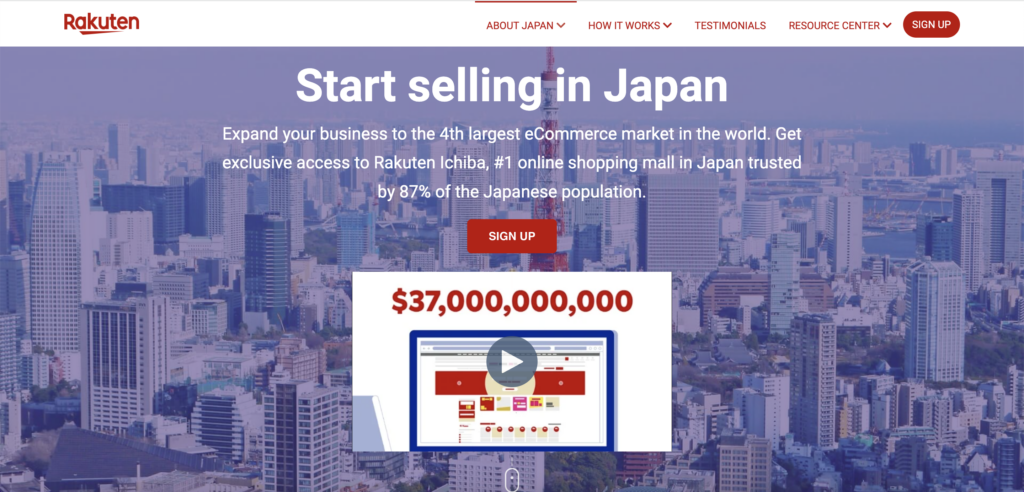
Pros and Cons
| Pros | Cons |
|---|---|
| Unlike platforms like Amazon, Rakuten does not compete with sellers by offering its own products, providing a level playing field. | Rakuten’s fees can be steep, with a monthly seller fee of $39, a $0.99 listing fee per item, and a sales commission ranging from 8%-20%. |
| Sellers can design their own stores, customize product listings, and even publish blogs to engage customers, a level of customization not commonly found on other platforms like eBay. | Although expanding, Rakuten’s reach is not as extensive globally as platforms like eBay. |
| Rakuten enables a more personalized interaction between buyers and sellers through flexible pricing, marketing, and promotions. | |
| With a significant user base in Japan, Rakuten is ideal for those looking to tap into an often-overlooked yet substantial eCommerce market. |
What Market is Rakuten Best For?
Rakuten is primarily tailored to sellers who want an alternative to the highly competitive markets of eBay and Amazon, especially those looking to venture into or already doing business in Japan.
Costs to Sell on Rakuten
Listings on Rakuten require a monthly seller fee of $39, a per-item listing fee of $0.99, and a sales commission that ranges between 8%-20%.
Direct Comparison with eBay
- Business model: Rakuten functions more like a traditional online retail platform than an auction-based model like eBay.
- Fees: Rakuten has a higher fee structure, with a monthly fee and per-item listing charges, compared to eBay’s 12.9% + $0.30 fee setup.
- Seller tools: Rakuten provides a robust set of tools and support for sellers, including customization options that eBay lacks.
- Global reach: While Rakuten is a powerhouse in Japan, its international reach is not as robust as eBay’s.
Reverb

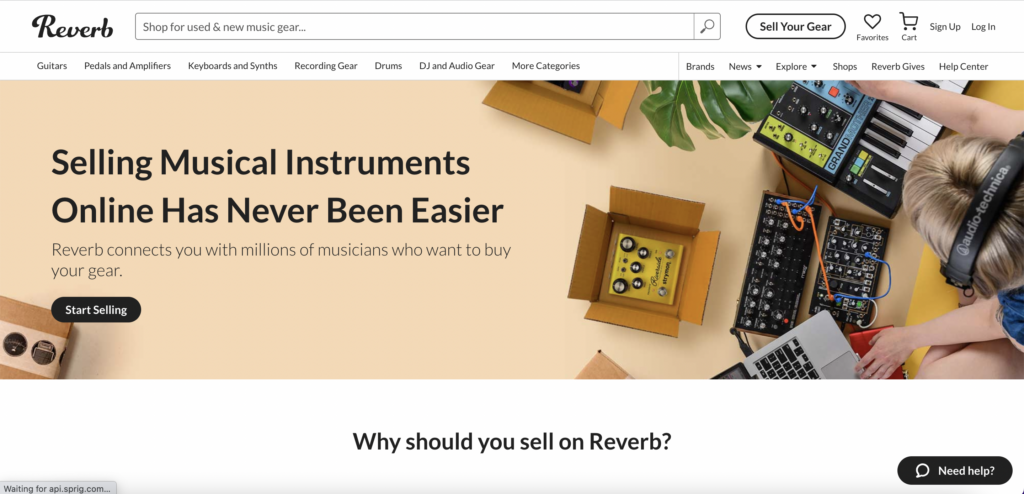
Pros and Cons
| Pros | Cons |
|---|---|
| Reverb specializes in musical instruments, accessories, and equipment, which can attract a dedicated community of buyers and sellers. | To get premium exposure for your products, sellers have to pay extra. This can add up, especially if you have many items to promote. |
| Each seller gets their own listing in a fixed-price format but has the flexibility to accept offers. | While listing is free, a 5% commission is taken on every product sold. |
| “Reverb Bump” allows sellers to give their listings greater visibility by placing them in more prominent positions. | |
| A free-to-join program that offers badges, discounted fees, and added protection to distinguished sellers. |
What Market is Reverb Best For?
Reverb is ideally suited for individuals or businesses looking to buy or sell musical instruments, equipment, and accessories. Musicians, collectors, and music enthusiasts can find a niche community here.
Costs to Sell on Reverb
There’s no cost to list products on Reverb. However, a 5% commission is levied on each item that sells. The minimum selling fee is $0.50, with a maximum cap at $500, ensuring sellers aren’t unduly penalized for selling high-ticket items.
Direct Comparison with eBay:
- Niche focus: Reverb is strictly centered around musical instruments and related products, while eBay caters to a wide variety of categories.
- Promotion mechanisms: Reverb’s unique “Reverb Bump” and “Preferred Seller” features help distinguish it from eBay’s promotional tools.
- Fee structure: Unlike eBay, which charges for both listing (in some categories) and final value, Reverb only charges a sales commission.
- Community: Reverb has fostered a dedicated community of musicians and music lovers, providing a more specialized environment compared to the broader eBay community.
Ruby Lane

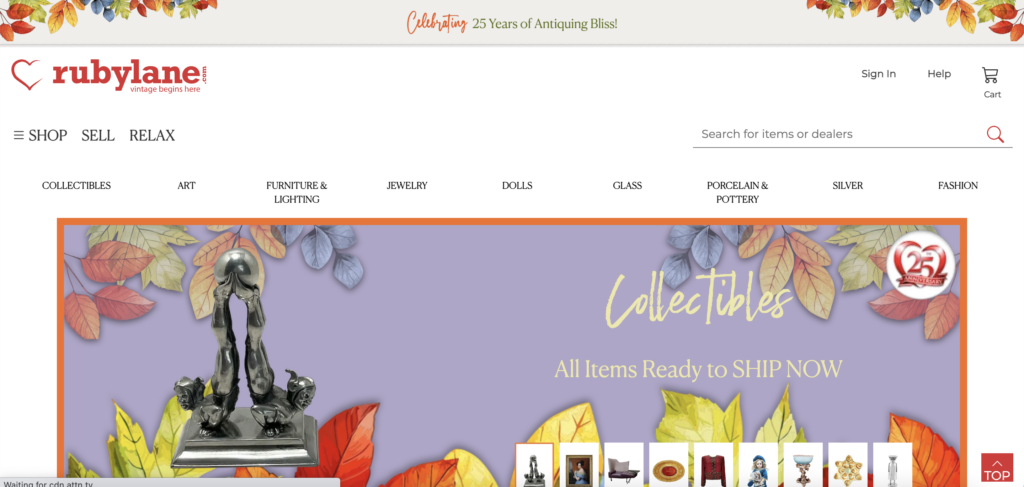
Pros and Cons
| Pros | Cons |
|---|---|
| Ruby Lane specifically targets the vintage fashion, collectibles, and high-end antiques market, attracting a specific audience interested in these items. | Unlike other platforms with straightforward fees, Ruby Lane’s fee structure includes setup fees, listing fees, and maintenance fees based on the number of items. |
| With a pre-screening process by in-house experts, the platform ensures that only genuine and high-quality products are listed. | New sellers must maintain at least ten items for sale in their shop at all times. |
| Sellers can enable the “offer” feature, where Ruby Lane’s software can automatically handle price negotiations for them. | The one-time setup fee of $100 might be prohibitive for some sellers, especially if they are just starting out. |
| By dividing their marketplace into “Lanes” or categories, Ruby Lane makes it easier for buyers to find specific items and understand the listing regulations for each category. |
What Market is Ruby Lane Best For?
Ruby Lane is best suited for sellers specializing in vintage fashion, collectibles, and high-end antiques who are looking for a dedicated platform with a specific customer base and are willing to invest in listing and maintenance fees.
Costs to Sell on Ruby Lane
Sellers incur a one-time setup fee of $100, which includes the first 10 listings. Subsequent listings are charged at $0.19 per item. A monthly maintenance fee starts at $69 for up to 80 items, with additional fees applied based on the number of products: $0.30 for items 81-150, $0.20 for items 151-1000, and $0.01 for each product from the 1001st item onwards.
Direct Comparison with eBay:
- Product focus: While eBay has a broad range of products, Ruby Lane concentrates on vintage and antique items.
- Pricing model: Ruby Lane uses a fixed-price model with the option for offers, whereas eBay provides both auction and fixed-price listings.
- Quality control: Ruby Lane’s pre-screening process by experts ensures a curated listing of genuine products, unlike eBay’s more open platform.
- Fee structure: Ruby Lane’s tiered fee structure based on item numbers is more complex compared to eBay’s simpler fee setup.
Visit Ruby Lane’s seller portal
Sears Marketplace
![]()
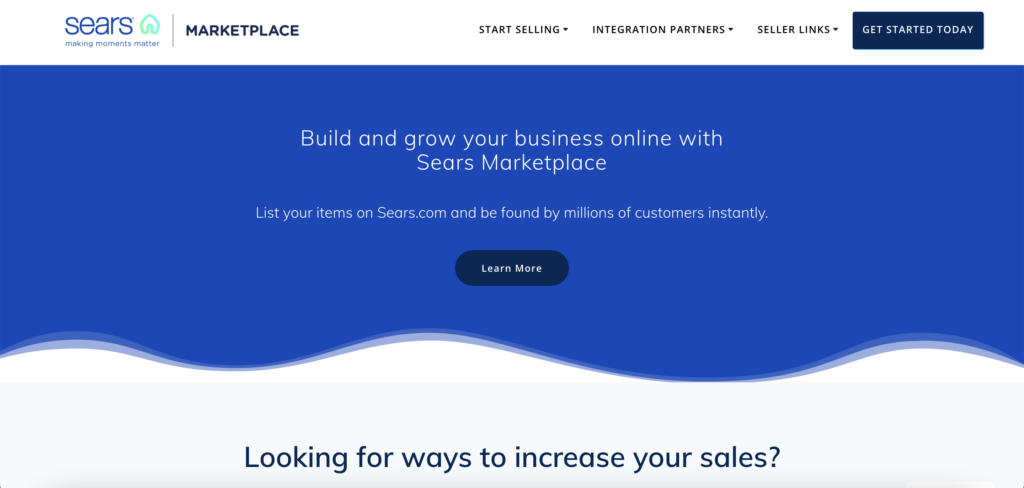
Pros and Cons
| Pros | Cons |
|---|---|
| Sears Marketplace allows sellers to capitalize on the trust and brand recognition associated with the long-standing Sears name. | Monthly membership fee of $39.99 plus an 8%-20% commission on sales could prove costly for smaller sellers. |
| Offers “Fulfillment by Sears,” a service that addresses warehousing concerns for merchants. | The platform has a more complicated sign-up process that requires various business verifications, including tax and insurance details. |
| Enables easy integration for existing eBay sellers, expanding their market reach. | Mixed reviews from vendors about the actual sales potential on the platform. |
| A wide range of categories accommodates various types of products. |
What Market is Sears Marketplace Best For?
Sears Marketplace is best suited for established sellers who are already running a stable business and looking to diversify their sales channels. Due to the various business requirements and monthly fees, it might not be ideal for small or new sellers. Sellers who can benefit from the platform’s warehousing solutions, or those who already have a presence on eBay and are looking to expand, may find Sears Marketplace to be a suitable option.
Costs to Sell on Sears Marketplace
The platform charges a $39.99 monthly membership fee and takes an 8%-20% commission on sales. There are also optional warehousing fees for those who opt for “Fulfillment by Sears,” which are charged at $0.45-$0.60 per cubic foot per month.
Direct Comparison with eBay
- Monthly unique visitors: Sears has 15M, compared to eBay’s 109M.
- Platform availability: Products listed on Sears can also appear on Sears.com, Kmart.com, and in-store kiosks.
- Fee structure: Sears charges a monthly fee plus a percentage commission, while eBay charges a percentage fee plus a fixed cost per sale ($0.30).
- Additional services: Sears offers warehousing through “Fulfillment by Sears,” a feature not directly comparable on eBay.
Visit Sears Marketplace seller portal.
Storenvy

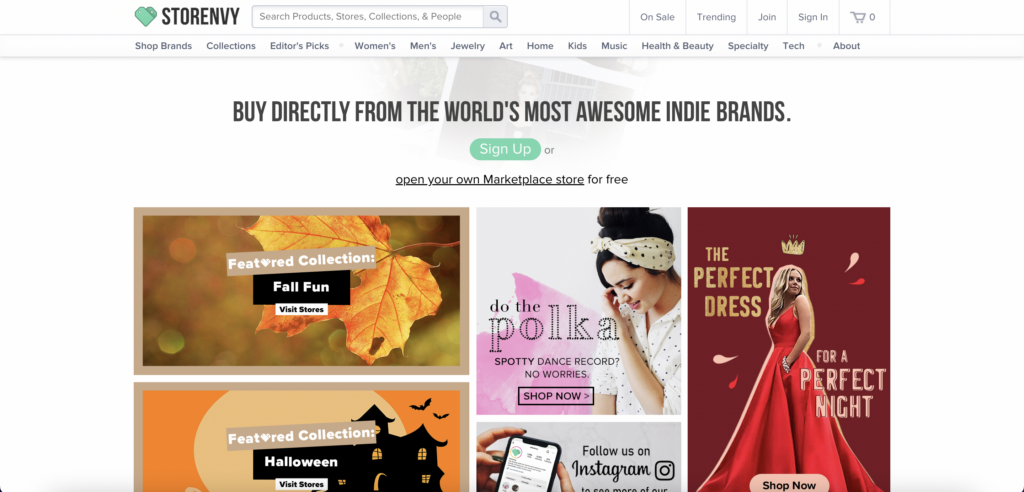
Pros and Cons
| Pros | Cons |
|---|---|
| Dual functionality as both a marketplace and a store builder gives sellers more options. | Higher commission fees of 15% on marketplace sales compared to eBay’s 12.9% + $0.30. |
| Lower entry barriers with free setup for up to 20 products make it accessible for small businesses or individuals. | Limited customization options and lack of third-party app integrations may be a drawback for some sellers. |
| A “social shopping” feature allows for a more community-driven approach to eCommerce. | SEO for individual stores may suffer due to the platform’s more robust SEO. |
| Focuses on indie and unique brands, providing a niche platform for specialized goods. |
What Market is Storenvy Best For?
Storenvy is ideal for emerging brands or individuals who are looking to enter the eCommerce space without a lot of upfront investment. It caters well to indie niches and those who value community engagement. It’s also good for those who want a simpler, less technical approach to online selling.
Costs to Sell on Storenvy
Selling on Storenvy is free for up to 20 products. For more product listings and a custom domain, plans start at $9.99 per month. In addition, a 15% commission is levied on sales made through the Storenvy marketplace.
Direct Comparison with eBay
- Business model: Storenvy offers both a store builder and a marketplace, while eBay is purely a marketplace.
- Fees: Storenvy charges a 15% commission on marketplace sales, while eBay’s fees are 12.9% of the sales price plus $0.30.
- Traffic: eBay has a much larger customer base, with 109M monthly visits compared to Storenvy’s 4M.
- Customization: eBay generally offers more in the way of third-party integrations and customization, whereas Storenvy is simpler but less flexible.
Varagesale

Pros and Cons
| Pros | Cons |
|---|---|
| Completely free of listing or success fees, making it cost-effective for sellers. | Limited reach due to a focus on local communities, restricting the market size for sellers. |
| Verified user profiles linked to Facebook, adding a layer of security and trust not found on all peer-to-peer platforms. | Significantly fewer monthly visitors compared to larger platforms like eBay, meaning less traffic and potential for sales. |
| Built-in messaging and payment features streamline the transaction process without requiring users to leave the platform. | The platform may lack advanced features and analytics tools for more serious, business-oriented sellers. |
| The option to ‘bump’ listings for free multiple times an hour increases visibility. |
What Market is Varagesale Best For?
Varagesale is most advantageous for sellers looking to move second-hand or unwanted items within their local communities. Its focus on local transactions and strong security features make it ideal for individuals who prefer in-person exchanges over shipping items. If you’re interested in community-based selling or small-scale ventures, Varagesale is a strong choice. However, it’s less suited for those aiming to establish a large-scale online retail business.
Costs to Sell on Varagesale
Listing on Varagesale is entirely free at this stage, with no commission fees.
Direct Comparison with eBay
- Seller sign-up: Both platforms allow easy sign-up, but Varagesale’s Facebook-linked profiles provide an added layer of verification.
- Fee structure: Varagesale is completely free, while eBay charges listing fees and a percentage of the final sale price, which varies depending on the type of item.
- Listing type: Both platforms allow fixed price listings; eBay also offers auction-style listings.
- Product range: Varagesale is primarily aimed at second-hand and local goods, whereas eBay has a much broader range of new and used items.
- Target audience: Varagesale targets local communities looking for secure, peer-to-peer transactions, while eBay has a global reach and a wider audience.
Visit Varagesale seller portal.
Vestiaire
![]()
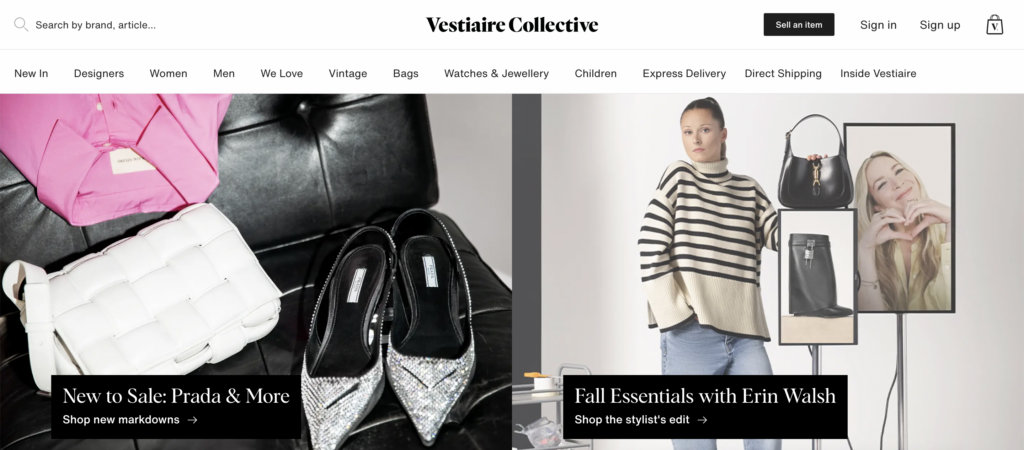
| Pros | Cons |
|---|---|
| Specializes in high-end, pre-loved fashion, catering to a niche yet lucrative market. | The success fee is a bit higher than other platforms, at 12% plus a 3% processing fee. |
| Offers an authentication service for high-value items, enhancing trust between buyers and sellers. | Sales are final, offering no returns, which might deter some potential buyers. |
| Covers all shipping costs, including the initial shipping to their authentication warehouse. | Limited to fashion items, making it unsuitable for sellers with a broader range of products. |
| Features a unique aesthetic with professionally edited photos, offering an appealing shopping experience. | |
| A Buyer-Seller chat tool encourages direct communication, making transactions more transparent. |
What Market is Vestiaire Collective Best For?
Vestiaire Collective is ideal for individuals or businesses specializing in luxury fashion, whether that’s as a main venture or a side hustle. Sellers with a strong sense of fashion and quality will find this platform aligns well with their niche. Those wanting to sell off their personal luxury items can also find value here. Businesses benefit from registering as a Professional Seller for more control and perks.
Costs to Sell on Vestiaire Collective
Vestiaire Collective charges a success fee of 12% along with a 3% processing fee. However, all shipping costs are covered by the platform, which may offset some of the selling costs.
Direct Comparison with eBay
- Fee structure: Vestiaire charges a 12% success fee plus a 3% processing fee, whereas eBay charges 12.9% plus $0.30 per item.
- Niche focus: Vestiaire specializes in luxury fashion, while eBay has a broader range of categories.
- Shipping: Vestiaire covers all shipping costs, including authentication, whereas on eBay, shipping policies may vary by seller.
- Authentication: Vestiaire offers an optional authentication service for items, creating trust and reliability in the marketplace. eBay generally does not offer this service.
- Buyer-seller communication: Vestiaire has a dedicated chat tool for buyer-seller communication, whereas eBay limits this to Q&A.
Visit Vestiaire seller portal.
Walmart
![]()
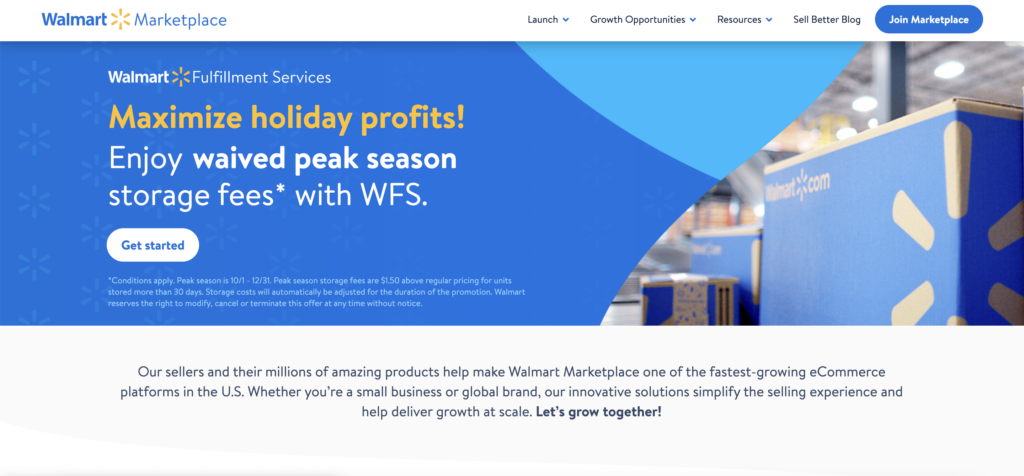
Pros and Cons
| Pros | Cons |
|---|---|
| Free to set up and no ongoing maintenance fees. | Sellers pay a referral fee of 8% to 20% upon successful sales. |
| Access to Walmart’s extensive reach and customer base. | Likely competition with Walmart-owned brands that may receive platform priority. |
| Growing investment in eCommerce, indicating a long-term commitment from Walmart. | Expectation for competitively-priced products, leading to potentially lower profit margins. |
What Market is Walmart Marketplace Best For?
Walmart Marketplace is most appropriate for established businesses aiming to build or expand their brand presence. If you have aspirations of seeing your products on Walmart shelves one day, this platform can serve as an entry point. Additionally, new sellers seeking to build brand credibility may also find this to be a viable option.
Costs to Sell on Walmart Marketplace
There are no set-up or maintenance fees. However, Walmart charges a referral fee ranging from 8% to 20% for each successful sale.
Direct Comparison with eBay
- Fee structure: Walmart doesn’t charge set-up or maintenance fees, but does take a referral fee for successful sales. eBay charges for listings and successful sales.
- Listing type: Walmart offers fixed-price listings, contrasting eBay’s auction-style format.
- Competitive landscape: On Walmart, you may compete against Walmart-owned brands, whereas eBay is more of a neutral platform.
- Sales volume: Walmart’s online sales currently lag behind eBay’s, but it’s still a growing platform.
- Profit margins: Walmart emphasizes competitive pricing, so be prepared for a potential race to the bottom on prices.
Wish

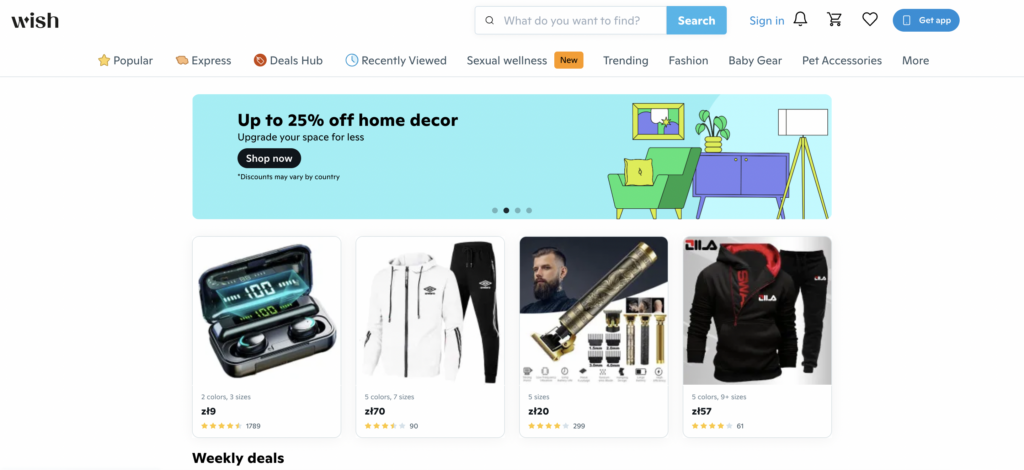
Pros and Cons
| Pros | Cons |
|---|---|
| Extremely low prices attract a specific kind of budget-conscious consumer. | Notorious for long shipping times, often stretching into months. |
| Free listings upon invitation to the platform. | 15% revenue share charged by the platform. |
| Recent efforts to cleanse the platform of counterfeit goods. | Significant drop in active users and revenue, posing questions about its long-term viability. |
What Market is Wish Best For?
Wish is most beneficial for sellers who specialize in dropshipping and are looking to move a high volume of low-cost items. Given the audience’s tolerance for extended shipping times, especially for cheaply-priced goods, Wish can be a viable platform for such business models. However, if you’re looking to sell locally-produced or high-ticket items, Wish might not be the best fit.
Costs to Sell on Wish
Listings on Wish are free, but the platform charges a 15% ‘revenue share’ on sales.
Direct Comparison with eBay
- Seller sign-up: eBay allows anyone to sign up, while Wish works on an invitation-only basis.
- Fee structure: Wish takes a 15% cut of your revenue, whereas eBay’s fees are generally less than 12.9% plus $0.30 per sale.
- Listing type: Both platforms allow fixed price listings, but eBay also supports auctions. Wish focuses on famously low fixed prices.
- Product range: Wish caters mainly to low-ticket items, while eBay offers more flexibility in the types of goods you can sell.
- Target audience: Wish seems to attract a younger audience through its personalized feed based on user data.
Key Points
As eBay develops, it is understandable that some sellers will consider alternative sales channels. While it is not impossible, it is unlikely that one of these alternatives could replace eBay all on its own.
Instead, you may be better off listing on several platforms and building a multi-channel strategy that incorporates eBay — but doesn’t make you completely dependent on it. That provides the best of both worlds.
You can exploit the high traffic and vast support network of software, tools and experts that eBay has, while developing your brand and recapturing a community feel from other marketplaces.
MORE: Amazon alternatives
This article was first published in April 2018, and last updated in October 2023.

I would also add Fruugo and Wowcher.co.uk we see increase sales on those. Any feedback on 'Wish' marketplace for US/UK sellers?